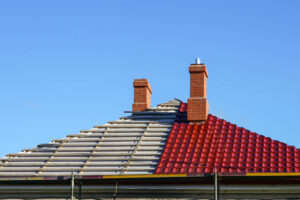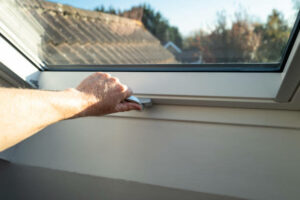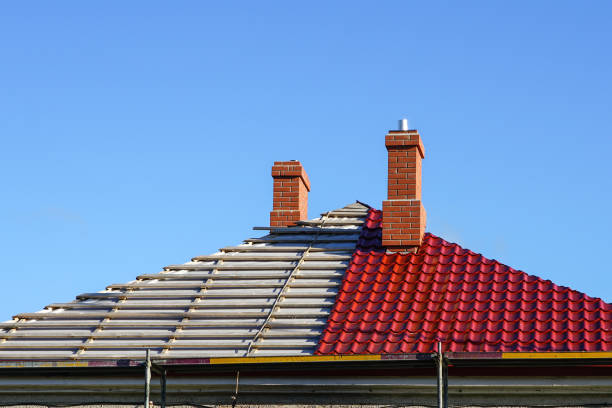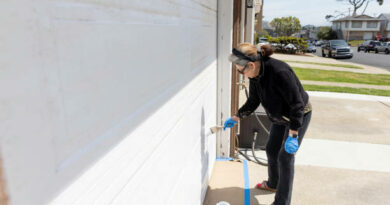Essential Home Upgrades for Maximum Energy Efficiency
As energy costs rise and environmental concerns grow, homeowners are increasingly looking for ways to improve their energy efficiency. Making smart upgrades to your home can help reduce your utility bills and lessen your environmental impact. From better insulation to energy-efficient appliances, several improvements can make a significant difference. This article will explore key upgrades that will help maximize energy efficiency in your home, ensuring both comfort and savings.
Improve Insulation to Keep the Temperature Stable
One of the most effective ways to enhance your home’s energy efficiency is by improving insulation. Proper insulation keeps the temperature inside your home stable, preventing heat from escaping during the winter and keeping it cool during the summer. Without sufficient insulation, your HVAC system has to work harder to maintain a comfortable temperature, leading to higher energy bills.
Start by inspecting your attic, walls, and floors for any gaps or thin areas of insulation. If you notice any cold spots or drafts, you may need to add more insulation. Spray foam insulation, fiberglass batts, and blown-in cellulose are popular options that can improve your home’s energy efficiency. Pay particular attention to areas where air can escape, like around windows, doors, and ducts.

Upgrade Windows to Energy-Efficient Models
Old, single-pane windows are a major source of heat loss and gain. Upgrading to energy-efficient windows can make a big difference in how much energy you use to heat and cool your home. Double or triple-pane windows have insulating gas between the panes, which helps reduce heat transfer. Low-E glass coatings can also reflect infrared light, keeping your home cooler in the summer and warmer in the winter.
While replacing windows can be a significant investment, it’s often worth it in the long run due to the energy savings. Additionally, energy-efficient windows can reduce outside noise, provide better UV protection, and increase your home’s overall value.
Seal Gaps and Leaks to Prevent Energy Waste
Air leaks around doors, windows, and other openings can lead to significant energy waste. Even small gaps can let out heated or cooled air, forcing your HVAC system to work harder. Sealing these gaps can prevent energy loss and improve comfort within your home.
Use weather-stripping around doors and windows, and apply caulk to seal cracks in walls, ceilings, and floors. Pay close attention to areas where pipes, vents, and wires enter your home. Insulating ducts and pipes can also help reduce energy loss. Regularly check seals and insulation, as wear and tear can cause leaks over time.
Energy-Efficient Appliances to Reduce Power Consumption
Another great way to improve energy efficiency is by upgrading your appliances to more energy-efficient models. Older appliances, such as refrigerators, washing machines, and air conditioners, can consume a lot of energy, even if they seem to be working fine. Newer models, however, are designed with better technology to use less energy while providing the same level of performance.
When shopping for new appliances, look for the ENERGY STAR label, which indicates that the appliance meets energy efficiency standards set by the U.S. Environmental Protection Agency. Replacing old appliances with energy-efficient models can lower your electricity bills and reduce your environmental impact over time.
Optimize Your Heating and Cooling System
Your heating and cooling system is one of the biggest energy consumers in your home. Optimizing your HVAC system can make a significant difference in your energy efficiency. Start by scheduling regular maintenance to ensure your system is running smoothly. This includes replacing filters, cleaning coils, and checking for leaks in ducts.
Consider upgrading your thermostat to a smart thermostat. These devices can adjust the temperature based on your schedule and can even be controlled remotely via your smartphone. By optimizing your heating and cooling, you can ensure your home stays comfortable without wasting energy.
Consider Roof Skylight Repair for Better Natural Lighting
If your home has skylights, keeping them in good condition is crucial for energy efficiency. Damaged or leaking skylights can let in drafts and contribute to heat loss. In addition to proper insulation, repairing any issues with roof skylights, such as sealing leaks or replacing broken glass, can help maintain the efficiency of your home’s heating and cooling systems.
Roof skylight repair can also improve the amount of natural light entering your home, which can reduce your need for artificial lighting during the day. By repairing or upgrading your skylights, you can enjoy both energy savings and an enhanced living environment.
Roof Replacement for Enhanced Energy Efficiency
If your roof is old or damaged, it may be time for a roof replacement. An outdated roof can allow heat to escape during the winter and let in too much heat during the summer, forcing your HVAC system to work harder. A new roof can improve your home’s insulation and prevent drafts, leading to better energy efficiency.
When replacing your roof, consider materials that reflect sunlight, such as cool roofing shingles or metal roofing. These materials help reduce the amount of heat absorbed by your home, keeping it cooler in hot weather and reducing air conditioning costs. A well-insulated roof also helps retain heat during the colder months, lowering heating costs.
Upgrade Your Lighting to LED Bulbs
Lighting is another area where energy efficiency can make a noticeable difference. Traditional incandescent bulbs use a lot of energy and generate a lot of heat. Switching to LED bulbs is a simple upgrade that can significantly reduce your energy consumption. LED bulbs use less electricity and last much longer than incandescent or fluorescent bulbs.
While LED bulbs may cost more upfront, their energy savings and long lifespan mean they will pay for themselves over time. Consider replacing bulbs in high-use areas like kitchens, bathrooms, and hallways to maximize your energy savings.

Consider Renewable Energy Options
If you’re looking for a more long-term energy-efficient solution, consider incorporating renewable energy sources into your home. Solar panels, for example, can generate electricity from the sun, reducing your reliance on the grid and lowering your electricity bills. Depending on where you live, there may also be incentives or tax credits available to help offset the cost of installation.
Other renewable energy options include wind turbines and geothermal heating and cooling systems. These systems require a larger initial investment, but they can provide significant savings over time and reduce your home’s carbon footprint.
Conclusion
Maximizing energy efficiency in your home doesn’t have to be difficult or expensive. By making smart upgrades such as improving insulation, upgrading windows, and installing energy-efficient appliances, you can reduce your energy bills and make your home more comfortable. Don’t forget to maintain your HVAC system, repair roof skylights, and consider roof replacement when necessary to ensure your home is as energy-efficient as possible. Small changes add up over time, and with the right improvements, you can enjoy long-term savings while helping the environment.




